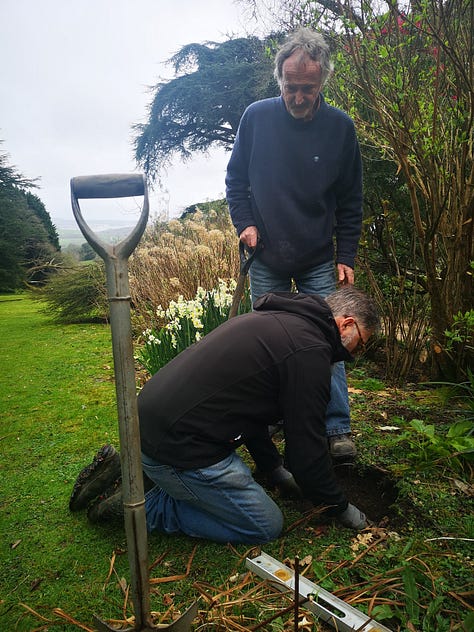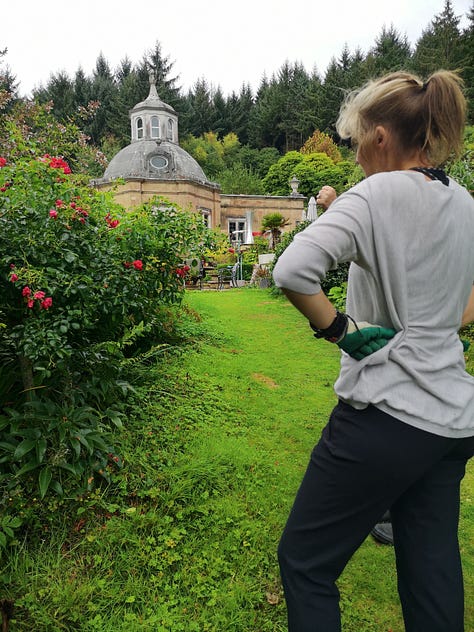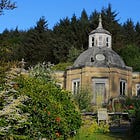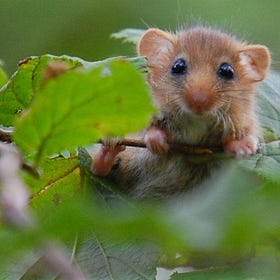Section 5.d. "Smaller-Scale Rewilding: A Practical Guide to Restoring Nature in Your Own Space"
'How Individuals Can Participate' - the latest section of LettsSafari's guide to smaller-scale rewilding.
We’re publishing weekly instalments of our guide to smaller-scale rewilding in LettsSafari+ and your inbox - section after section, week after week. Packed with amazing photography and immersive videos straight from our parks.
If you're not already a paid member of LettsSafari, subscribe today. Get the amazing guide and help build more rewilding safari parks for the cost of a cup of coffee a month.
How Individuals Can Participate
One of the empowering truths of smaller-scale rewilding is that anyone with access to a piece of land - no matter how small - can be a rewilder. You don’t need to own a nature reserve or be an ecologist to make a meaningful difference. In fact, collectively, the efforts of many individuals rewilding their gardens, yards, or community spaces may well be the most crucial element of this movement.
This section provides a practical guide for individuals looking to participate in rewilding. We’ll outline step-by-step how to approach rewilding any space, offer tips on maintaining these new wild areas for long-term success, and discuss ways to engage the community and advocate for broader change. Whether you have a tiny urban backyard, a bit of land at your workplace or school, or just a shared plan for a local vacant lot, these pointers will help you transform it into a thriving natural haven.
Practical Steps to Rewild Any Space, Big or Small
1. Assess Your Site: Start by observing and understanding the area you want to rewild. Note the size, soil type (is it clay, sandy, rich, poor?), sunlight exposure (full sun, partial, shade), moisture (dry, damp, waterlogged?), and existing vegetation. Also, consider what surrounds your site - neighbouring gardens, farmland, woods? This can influence what species might naturally colonise. For example, if you’re near a woodland, expect tree seedlings to blow in; if near a river, maybe wetland plants will appear. Understanding the starting conditions helps you plan. Also identify any problematic issues - e.g., presence of aggressive invasive plants or heavy pollution - so you can address those early. If the soil is very poor and compacted, you know nature will start with pioneer tough plants (maybe you assist by loosening soil in spots). If it’s nutrient-rich lawn, you might consider removing some topsoil to reduce fertility for a meadow (or repeatedly cutting and removing grass clippings to exhaust soil nutrients).
2. Define Your Goals (but be flexible): Clarify what you want from rewilding the space. Is it a wildflower meadow aesthetic in summer? A shady mini-forest? A general biodiversity boost? Carbon sequestration? These goals can shape initial actions. For instance, if pollinators are a main goal, you’ll prioritise flower planting. If “a peaceful retreat” is a goal, you might plan a seating area or path. It’s okay for an individual’s rewilding project to have human-centric goals too (like beauty or education), as long as the methods are nature-friendly. Write down a simple vision but be open to nature’s plan, which might pleasantly surprise you with outcomes you didn’t anticipate.
3. Involve Stakeholders (if not solely yours): If it’s your private garden, you’re the boss - but if it’s a shared space (family, roommates, community garden, schoolyard), discuss with others and get buy-in. Show examples of pretty rewilded gardens or mention how it can reduce maintenance work. Often people worry it’ll look unkempt - having a plan to include some orderly elements (like mown edges or a little sign explaining the wild area) can ease concerns. Perhaps propose a trial: “Let’s not mow this corner for one summer and see what happens.” One 2024 LettsSafari update noted by doing initiatives like No Mow May, people got to witness the wildflowers and were convinced.



4. Remove or Mitigate Major Threats: At the outset, remove things that will hinder natural processes. This could mean:
Stopping pesticide/herbicide use immediately. Let nature rebalance without chemical interference.
Removing invasive non-native plants that could outcompete everything (e.g., ripping out a patch of Japanese knotweed or aggressive ivy if it’s smothering the ground). If removal isn’t feasible quickly, plan to control them over time so natives can get a foothold.
If soil is contaminated (say with rubble or chemicals), you might need to remediate by adding clean topsoil or using phytoremediation (certain plants that uptake toxins) depending on severity.
Removing or phasing out intensive uses - e.g., if it’s a lawn that’s been fertilised heavily, stop fertilising and consider adding yellow rattle (a hemiparasitic wildflower that suppresses grass vigour, allowing wildflowers to grow).
Ensure the area is safe for wildlife: to include covering water barrels (to avoid trapping hedgehogs), capping pipes and removing netting that could entangle animals.
5. Plan the Habitat Layout: Decide roughly where different features will go. If you have space, aim for a mix: maybe a mini-pond in the low spot, a patch of meadow in the sunny centre, some shrubs or trees along a fence for a mini-woodland/scrub. If tiny, you might do just one habitat (like a wildflower border and a small tub pond). Use the site assessment: wet area becomes wetland, dry area a dry meadow, shady area a woodland patch. Aim for structural diversity (tall, short, dense, open, wet, dry). You can sketch a simple map. Keep some existing features if they’re beneficial - e.g., if you already have an old apple tree, wonderful, that’s part of your rewilding core. For smaller spaces, the rule of thumb should give 25% of your land to trees, 40% of the land for wild grasses and a wildflower meadow and 35% for wild shrubs and plants.
How To Make your Garden the Ultimate Wildlife Haven
Part 3 of our 4 part series on ‘Creating Your Very Own Safari Garden’ offers computer generated designs, tips and tricks to turn your small garden into a veritable wildlife haven. After all, who wouldn’t want a miniature safari park in their very own back yard? Rewilding the LettsSafari way is not for large wilderness spaces - our smaller-scale rewilding system is engineered for the masses. We believe that this is the best way to make a real climate difference.
6. Source Native Plants or Let Nature Sow? Decide how much you will actively plant vs. allow natural regeneration. Often a combination is best:
If your goal includes particular native wildflowers and they’re not present, sow a native seed mix or plant plugs. For example, sowing a meadow seed mix in prepared soil can jump-start a diverse grassland. Or plant a small wildflower plug plant kit in the lawn after the first year to introduce species.
If near seed sources, you can also let wild plants colonise. Perhaps stop mowing and see what grows in year 1. Then, if some desired species are missing, introduce those in year 2.
For trees, if you’re patient, see what seedlings appear (birds might plant hawthorns via droppings, wind might bring willow). If you want specific trees or quicker results, plant a few saplings (preferably local provenance). Seedlings can also be transplanted from elsewhere carefully - e.g., a baby oak from a friend’s yard to yours.
For ponds, you might let them colonise naturally (often they will via bird feet carrying eggs of water fleas, etc.). But adding a small bucket of water or pond mud from an established wildlife pond can introduce beneficial microorganisms and pond plants. Avoid introducing fish if your goal is amphibians.
Remember, using native species is key. Seek out local wildflower nurseries or seed suppliers. Many countries have “pollinator friendly” or “native meadow” seed mixes - ensure it’s region-appropriate (some mixes sold as wildflower contain non-natives that are easy to grow; try to get ones that are truly native to your area). Plantlife or Xerces Society websites often list reputable sources.
7. Water and Soil considerations: If possible, incorporate a water feature. It could be as simple as burying a shallow dish or upside down garbage can cover as a mini-pond or as involved as digging a lined pond. Water dramatically increases habitat niches. Even a small damp bog garden helps (for example, sink a bucket, fill with sand/soil and keep it wet for a bog).
If soil is compacted, aerate or break it up in places (just turning it with a fork can help seeds germinate).
If soil is too fertile (ex-lawn or ex-flowerbed with fertiliser), consider stripping off some topsoil or growing a nutrient-hungry crop like mustard then removing it, to lower fertility for wildflowers. Or, just expect that initially you’ll get rank growth (nettles, docks, etc.) and you may have to cut and remove material for a couple of seasons to gradually reduce vigour.
Create some bare patches of soil in sunny spots if you want ground-nesting bees or certain wildflowers that need open ground to germinate (like poppies or chamomile).
Add dead wood: bury a log halfway upright (a mimic stump), pile some sticks, or partially bury some rotting wood as a “nurse log” for fungi/insects. For optimal results make sure your log or branch is 8 inches wide.
For structure, maybe place some rocks or a flat stone pile (reptiles and amphibians appreciate this).








